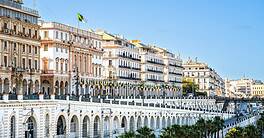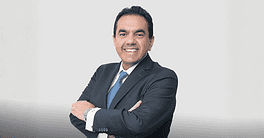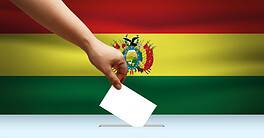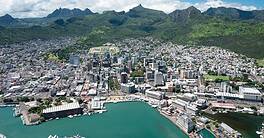The Gulf country seeks to grow its economy beyond hydrocarbons.
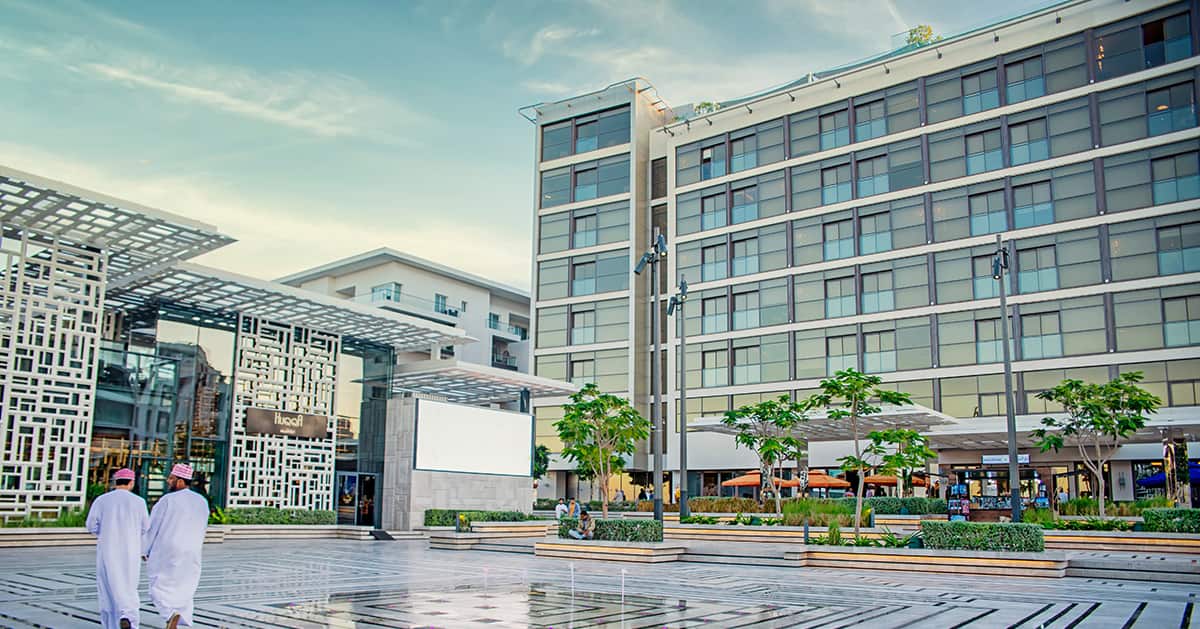
|
VITAL STATISTICS |
|---|
|
Location: Southeast Asia |
|
Neighbors: Singapore, Thailand, Brunei and Indonesia |
|
Capital city: Kuala Lumpur |
|
Population (2023): 34,153,800 |
|
Official language: Malay |
|
GDP per capita (2022): $12,295 (expected) |
|
GDP growth (2022): 6% (est.) |
|
Inflation (2022): 4.1% (est.) |
|
Unemployment rate: 4% |
|
Currency: ringgit |
|
Investment promotion agency: InvestKL, under the Ministry of International Trade and Industry; also the Malaysian Investment Development Authority for manufacturing and servicing sectors |
|
Corruption Perceptions Index rank (2021): 62/180 |
|
PROS |
|---|
|
Political stability |
|
Local currency pegged to the USD |
|
National Development Plan Vision 2040 |
|
Tax and customs incentives |
|
Free-trade agreements with USA, Singapore, Switzerland |
|
Liberal economy looking to privatize state assets |
|
CONS |
|---|
|
Lags behind GCC peers |
|
Oil-dependent economy |
|
Heavy local bureaucracy |
|
Regional instability |
|
Climate change heavily impacts the country |
|
Sources: World Bank, IMF, Transparency International, Central Bank of Oman, Business Insider, UNCTAD World Investment Report. |
|
For more information, check out Global Finance‘s Oman Economic Report data page. |
Like most hydrocarbon-producing countries, Oman recorded a strong performance this past year, with GDP growth above 4%, driven by high energy prices as well as increased oil and natural gas output. In the first nine months of 2022, Oman’s revenue jumped 43% and the country hit a $3 billion budget surplus, allowing Muscat to post its first yearly surplus in a decade.
With higher revenue, the International Monetary Fund expects Oman to lower government debt from 62.9% of GDP in 2021 to 44% in 2022. The authorities are also pumping part of that extra revenue into reforms and large projects to improve infrastructure such as water networks, recycling plants, grain storage facilities, farms, desalination units, refineries and oil facilities.
“Oman has a vibrant economy and an open attitude toward foreign investment,” says Chrissi Zamora, CEO of Europe and Middle East at Singapore-based Healy Consultants. “The government is making the country more attractive to foreign investors by improving infrastructure and creating new laws that will benefit domestic businesses and international companies.”
Throughout the pandemic, Oman remained an attractive market. In 2021, foreign direct investment (FDI) reached $44 billion, up 7.7% from 2020. Almost 70% of investments targeted oil and gas extraction, followed by the financial sector, manufacturing and real estate. UK-based investors represented the largest portion ($20 billion), followed by those from the US ($5.5 billion), the UAE ($2.6 billion), Kuwait ($2.3 billion) and China ($2 billion).
Reforms and Partnerships
To encourage foreigners to invest in Oman, the authorities completely reshuffled the business environment in 2019 with a new set of rules, including a foreign capital investment law that now allows 100% foreign company ownership, up from 70%. Having a local partner is no longer compulsory, and the government lifted the $390,000 minimum capital requirement. Although that doesn’t apply to all sectors of the economy, it is a considerable change.
Omani authorities also introduced a bankruptcy law, which went into effect in 2020, boosting investor confidence. They also eased digital licensing processes, and improved transparency as well as data disclosure. These measures complement existing tax breaks and custom duty exceptions.
In March 2022, the Muscat Stock Exchange eliminated restrictions on foreign ownership of listed companies, which opened new opportunities for more than 100 local firms. Muscat announced it would list over 35 state-owned companies over the next five years, potentially attracting billions of dollars in proceeds.
Longtime investors have mainly focused on the hydrocarbon and luxury retail sectors. Still, the country is changing, and newcomers are looking at public-private partnership (PPP) opportunities opening up in industries like oil and gas, pharmaceuticals, logistics, agriculture, tourism, new technologies and sustainable development.
In November, the Trump family signed a partnership agreement with the government of Oman and a Saudi firm to build a real estate complex 20 minutes outside of Muscat. The $4 billion project includes 3,500 high-end villas, two hotels, a golf course, restaurants and stores. That same month, Nortal, a multinational digital firm, set up a tech hub in Oman. The Estonia-headquartered company has worked in Oman for 10 years on PPP contracts to help the public sector digitalize services such as tax management platforms, the 2020 e-census and the Invest Easy Portal.
Qais Mohammed Moosa Al Yousef, Oman’s minister of Commerce, Industry, and Investment Promotion, described Nortal development as “an excellent example of a company that has won and worked on public sector contracts over several years, believed in the country and is now a major investor and technology partner.”
In September, Oman Post signed an outsourcing deal with VFSGlobal, a UAE-based tech firm that provides consular services on behalf of public institutions.
One of the hottest countries in the world, Oman is concerned with climate change and recently started investing in sustainable energies. Authorities said they would convert 30% of the national electricity consumption to renewables by 2030 and are looking for international partners to help make that happen. In July, Oman signed with France’s Veolia and TotalEnergies to build the country’s largest photovoltaic farm to power an existing desalination plant, providing drinking water to over 600,000 people.
A Quiet, Comfortable Life
For investors looking to not only inject capital but also move there, Oman is a quiet and rather traditional country, where the Arabic language and Islamic culture are predominant. Personal relationships are paramount, and Omanis often expect business partners to show they can adapt to the local culture.
“We see many opportunities in the country, but the key to success here is to be as flexible as possible. Omanis are willing to pay for quality services, but they want them at a reasonable price. They also prefer local companies and products, so we must familiarize ourselves with the market and develop relationships with potential clients,” says Healy Consultants’ Zamora.
Although it has the second-largest population in the Gulf, Oman doesn’t have the same cosmopolitan vibe as neighboring countries like the UAE, Qatar or, perhaps more recently, Saudi Arabia. With 1.4 million inhabitants, Muscat is a relatively small city that welcomes many English-speaking expatriates, but they shouldn’t expect hyped restaurants, lavish malls and bling nightlife.
“Things are rather slow in Oman. If you are here to make a quick fortune, forget it, but if you are looking for a calm and pleasant life, it is the right place,” says Abdel Ghani Athmani, founder of Arabian Crane Services. A former employee with US crane manufacturer Grove, Athmani, a French national, moved to set up his own agency in Oman in 1999. He later started Weos, a manufacturer of trucks for the oil and gas industry. Aside from the local market, Athmani now exports to Kuwait, Qatar and the UAE. In the near future, he is also contemplating business in Africa.
“Business-wise, we feel very free,” says Athmani. “There are many things to do. You just have to find the right opportunity.”
Oman wants to position itself as a strategic location for investors looking to scale to Gulf countries and the Middle East as a trade and logistics hub connecting Africa, Asia and Europe with free trade agreements with the US, Singapore and Switzerland. Although it stands at the heart of a turbulent region, Oman’s neutral foreign policy limits the spillover effects from neighboring crises with the Straight of Hormuz, Yemen, Iran and Israel.
Overreliance on Hydrocarbons
Looking ahead, overreliance on hydrocarbons remains the main challenge for Oman. Oil exports still account for over 30% of the country’s GDP, 60% of exports and over 75% of government revenue, making the economy vulnerable to global price fluctuations and demand.
Reforms are underway to diversify the economy, and in late 2022, S&P Global Ratings raised its long-term sovereign credit ratings on Oman from BB- to BB. “We expect fiscal reforms to continue, including the possible introduction of personal income tax on high earners and measures to increase value-added tax (VAT) receipts…gradual cuts to electricity and water subsidies and a tighter rein on capital and current spending,” the agency wrote in its latest publication on Oman.
